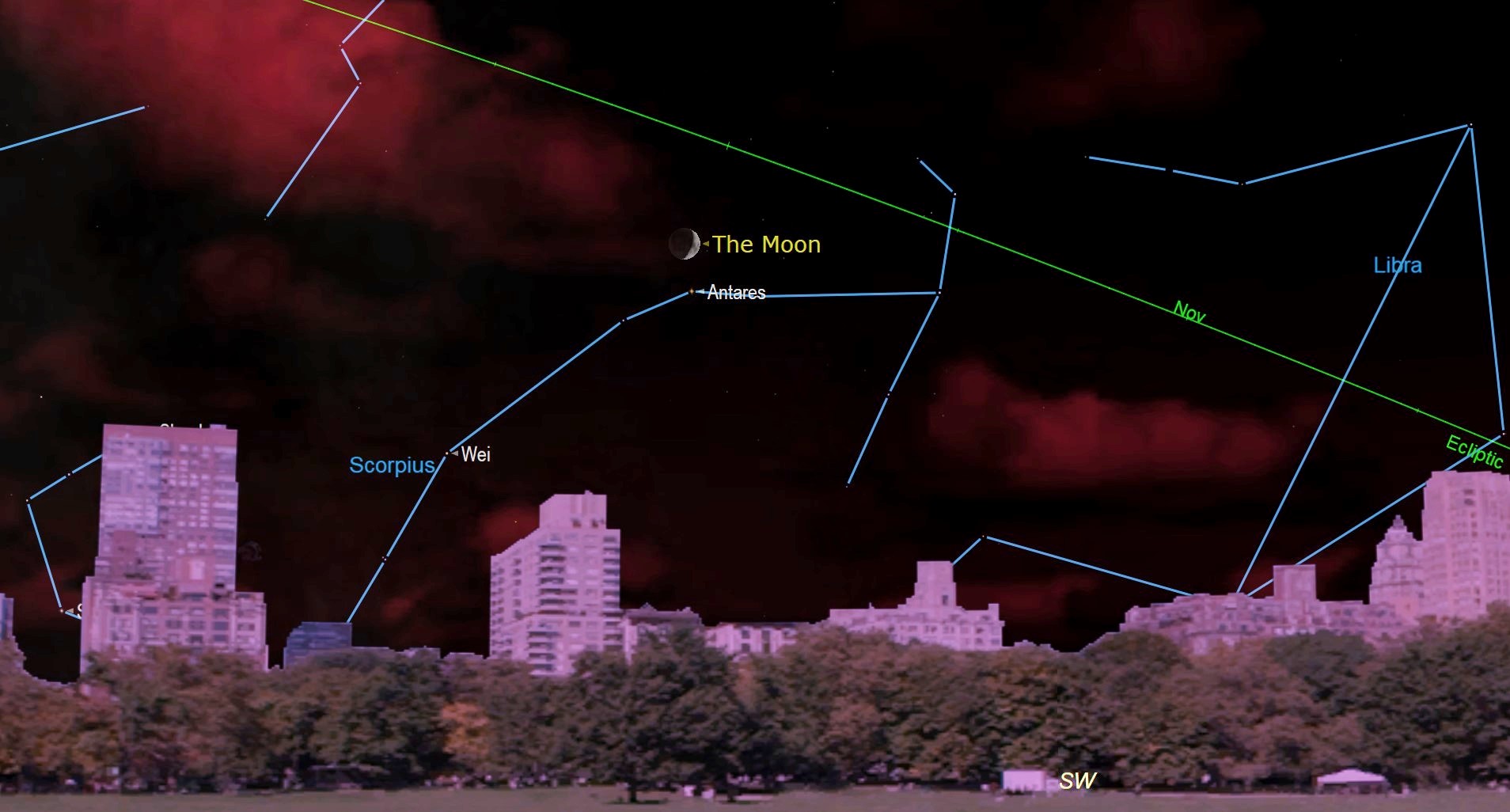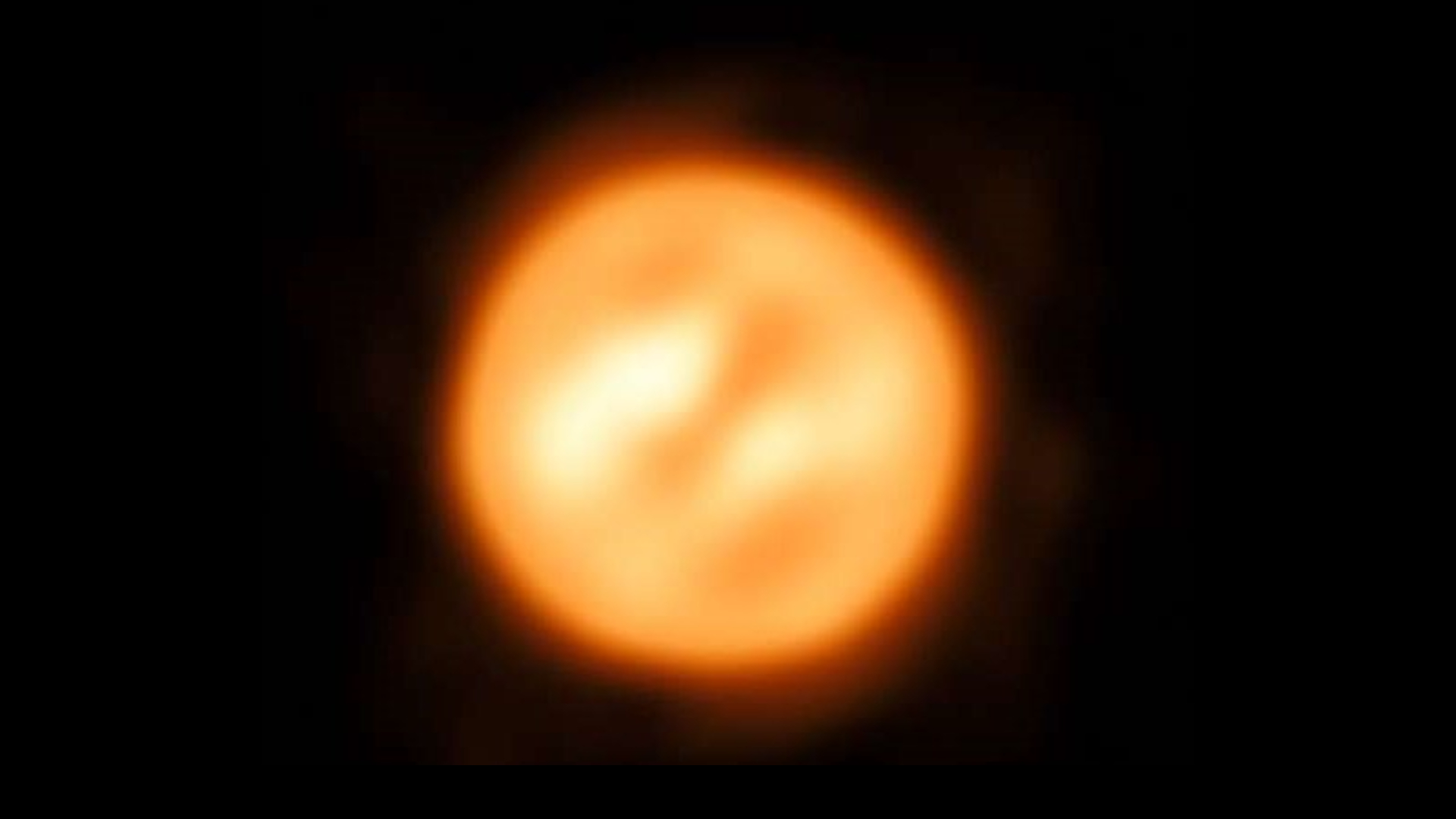See the crescent moon shine above the red star Antares tonight (Sept. 30)
The waxing moon will be just a thumb's width above the bright star in the constellation of Scorpius which is often called 'the heart of the scorpion.

Tonight (Sept. 30), the waxing crescent moon will sit just above the brightest star in the constellation of Scorpius — Antares.
The thin sliver of the moon that is visible as its bright side continues to turn from Earth will be just a thumb's width — about 1.5 degrees — above this red star in the southwestern sky.
The star is also known as Alpha Scorpii due to it being the brightest star in the constellation of Scorpius, the scorpion. At times it has also gone by the name 'the Scorpion's Heart.'
Related: The brightest planets in September's night sky: How to see them (and when)
The star is seen as a sparkling red pinpoint during summer evenings in the Northern Hemisphere and during winter evenings in the Southern Hemisphere and has an apparent magnitude between 0.88 and 1.16. (On the magnitude scale used by astronomers, lower numbers signify brighter objects. For example, at its brightest, the planet Venus shines with a magnitude of about -4.6.)
Antares is of the 20 brightest visible stars from Earth and has cemented itself into the folklore of our ancestors.
The name Antares comes from the Greek translation of the phrase 'rival to Ares.' Ares was the Greek god of war who would become known as Mars. Thus, the name Antares really means 'rival to Mars' referring to the planet Mars — the planet's name arising as a result of the planet's blood-like coloration.
Get the Space.com Newsletter
Breaking space news, the latest updates on rocket launches, skywatching events and more!
This mythological rivalry relates to the closeness in the color of the two bodies and the fact that the bodies pass close by each other in the sky frequently.
While the red coloration of Mars is the result of the rocky planet being covered by iron-rich dust and rocks that have oxidized and turned orangy as the result of water exposure.
Antares, on the other hand, is a red supergiant star with no solid surface. As stars like the sun run out of fuel for nuclear fusion the radiation pressure that balances the inward force of gravity ceases. This causes the core of the star to undergo gravitational collapse.

As this happens, however, the outer shells of that star are still carrying out nuclear fusion — burning hydrogen and creating helium — which causes the shell to "puff out" As the outer shell grows the heart generated by nuclear fusion spreads over a larger area.
This causes the surface of the now massive star to cool which leads it to glow red. This is the red supergiant phase that Antares is currently experiencing and is something the sun will go through in about 5 billion years as it swells out to around the orbit of Mars — swallowing the inner planets including Earth.
Antares has a diameter that is currently between 600 and 800 times the diameter of the sun — around 588 million miles to 692 million miles (946 million kilometers to 1.114 billion kilometers) and is much cooler than the sun. It's that massive surface area that accounts for its brightness.

Looking for a telescope to view Antares? We recommend the Celestron Astro Fi 102 as the top pick in our best beginner's telescope guide.
The closeness of Mars and Antares — and Antares and the moon on Friday evening for that matter — in the sky is an illusion with the red supergiant lurking around 550 million light-years from Earth.
When Antares's red supergiant phase comes to an end it will undergo further gravitational collapses and will fuse increasingly heavier elements in its core.
As it is 11 to 14 times the mass of the sun, Antares is massive enough to end its life with a massive supernova blast that will leave behind either a neutron star or a stellar-mass black hole.
Astronomers aren't sure when exactly this supernova blast — which will be visible from Earth — could occur but it is likely to happen within the next few millions of years.
Thankfully, the red supergiant is highly likely to be present in time for its close encounter with the crescent moon in the evening on Friday.
Join our Space Forums to keep talking space on the latest missions, night sky and more! And if you have a news tip, correction or comment, let us know at: community@space.com.

Robert Lea is a science journalist in the U.K. whose articles have been published in Physics World, New Scientist, Astronomy Magazine, All About Space, Newsweek and ZME Science. He also writes about science communication for Elsevier and the European Journal of Physics. Rob holds a bachelor of science degree in physics and astronomy from the U.K.’s Open University. Follow him on Twitter @sciencef1rst.









